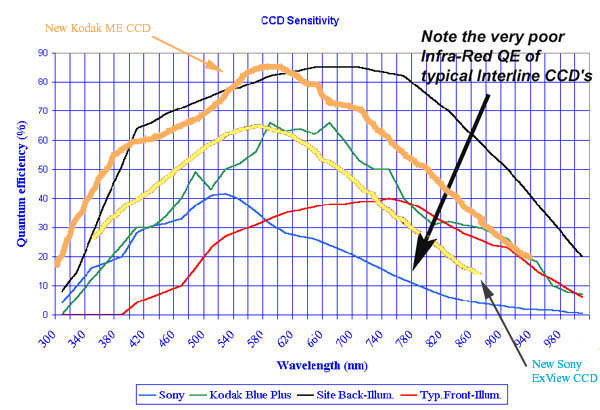|
Key to the Alta platform are
the embedded USB2.0 and 100baset interfaces that allow for high speed data
transfer, enhanced connectivity and remote control.

USB2.0
interface
USB2.0 is a 480 mb/s
interface and can take full advantage of the 10 Mega pixel/second
digitization rates possible in the Alta camera heads. The interface
fully supports USB1.1 download speeds at about 530 KPixels/second.
The Apogee USB2.0
interface is more than a simple patch to an existing USB2.0 chipset.
When combined with SDRAM, a custom FPGA data management unit, and a
custom FPGA camera controller, it becomes a full USB2.0 implementation
without the drawbacks of a fully loaded USB port.
TCP/IP
or UDP data transfer modes for 10/100baset
Having a true
100baset network interface opens the door to a host of new
possibilities. Each camera has a unique IEEE assigned MAC address so
that it can function directly on the www. The cameras become
host-independent and does not require a computer near the camera to
operate. Each camera can be a unique address on the www, or within a
local network. Because the camera has slave serial, I2C, and Aux filter
wheel and guider support, an entire observatory can be controlled from
behind a single camera interface. For WAN or WWW connections, a full
TCP/IP protocol gives safe data transfers at slower speeds. Below is a
diagram showing how the Alta system may be connected in an astronomy
application. Note that the observatory to control room cable can be
replaced with an available wireless system, completely eliminating the
need for cables.
For our OEM
customers desiring to embed the Alta camera
or custom derivative into their system, the cameras ability to control
other peripherals through a common network connection allows the entire
system to be networked. For example, if the system requires serial
communications to a filter wheel or other subsystem component, the two
slave serial ports can connect directly to the subsystem components. A
special bi-directional digital interface with 6 i/o lines can also be
used to interface to other system components. High level shutter
signals, as well as digital strobes and triggers are available.

Integrated 100baset WEB server
The network
interface includes a powerful RISC processor with built in WEB server.
This opens the door to many powerful options for camera control. When
first released, the WEB server allows browser configuration of the
network interface parameters such as DHCP, Fixed IP address. Simply
access the camera with any web browser to access these functions. Over
time we will add to this capability to include complete camera control
and image acquisition from any web browser. Because of our WEB based
program updates to the camera, you may update your camera control
software as we add new features over time without cost or rework to the
camera.
|




